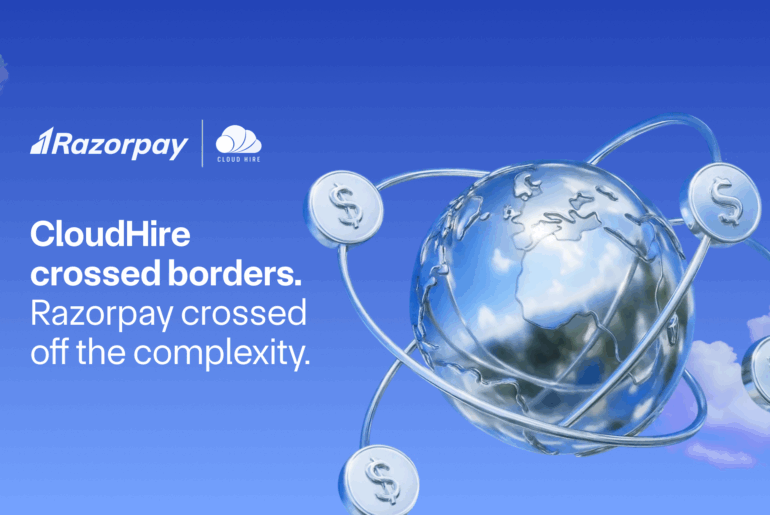Because one box shouldn’t stand between intent and revenue.
Every millisecond matters in digital payments. Every extra field? A potential conversion killer. And one of the biggest culprits? That tiny 3- or 4-digit CVV field. Re-entering CVV might feel like a small inconvenience, but for mobile users, rushed shoppers, or returning customers who’ve already saved their card—it’s a conversion killer.
Here’s what it causes:
- Mobile drop-offs due to friction
- Broken flows for premium cards like Amex and Diners
- Abandoned carts just before payment completion
Merchants lose real revenue at the moment of highest intent. At Razorpay, we’ve fixed that.
Enter Razorpay’s Fix: CVV-less Payments
Say hello again to CVV-less payments — a secure, fast, and regulation-compliant experience that eliminates the CVV field for tokenized cards, leading to smoother checkouts and better conversions.
Instead of retyping digits, they authenticate with a secure OTP. That’s it.
No CVV = No friction = Higher conversions
And Razorpay is the first and only payments platform in India to enable CVV-less payments across all five major card networks:
Visa | Mastercard | RuPay | American Express | Diners Club
Why It works for businesses Like yours
- Up to 4% More Conversions: Removing CVV at checkout can lift conversions by 3–4%, especially on returning customers with saved cards. That’s a massive win if you’re processing thousands of payments a day.
- Smarter Flows for Amex & Diners: These premium cards tend to be used for high-ticket purchases. Any friction in their flow = higher losses. A secure and seamless CVV-less ensures these transactions stay fast and frictionless.
- Better Retention: A smoother checkout means customers are more likely to return. Especially for subscriptions, repeat travel bookings, or frequent shoppers.
- Zero Complexity to Enable: If you’re using Razorpay’s Standard Checkout — you’re already covered. No changes needed. On Custom or S2S Checkout — just remove the CVV field from your UI and API.
Integration: Zero complexity to enable
If you are on custom or S2S checkout with Razorpay, we encourage the businesses to remove the CVV box on the checkout page. If you are live on Razorpay Standard Checkout, the UI changes reflect automatically. The customer can choose their saved cards as their preferred payment option and experience a faster transaction. More details here.
But… Is it secure?
Yes — absolutely.
- CVV-less payments are only enabled on tokenized cards, where customers have already given consent to save their card
- Tokenized cards are encrypted and stored with the issuing bank or card network
- The system is 100% RBI-compliant, built on Card-on-File Tokenization (CoFT) standards
- Card networks themselves (Visa, Mastercard, Amex, Mastercard, Rupay) have made CVV optional for tokenized transactions.
So, when your customer says, “I’m ready to pay” — your checkout shouldn’t reply, “Please enter CVV.” One less field. Hundreds more conversions.
Frequently Asked Questions (FAQs)
1. What is CVV-less payment?
CVV-less is a payment flow where customers don’t need to re-enter their CVV while paying with saved (tokenized) cards. The transaction is authorized using OTP only.
2. What is a CVV and why is it being removed?
The Card Verification Value (CVV) is a 3- or 4-digit number on the back (or front for Amex) of a card, traditionally used as an extra layer of security. For saved cards, it’s no longer mandatory as per card network regulations—if tokenization and OTP authentication are in place.
3. What is Tokenization?
Tokenization is a process where the actual card number is replaced with a secure token by the card network. This token is used for transactions instead of the card details—making the flow more secure and compliant with RBI guidelines.
4. How can I handle the CVV field for Razorpay payments with saved cards?
You don’t need to.
If the card is saved/tokenized, you can skip passing the CVV field entirely in your API payload. Razorpay will handle the authentication securely using OTP.
5. Does this mean I no longer need to accept CVV from customers?
Yes — but only for saved/tokenized cards. You’ll need to make changes to your UI to stop asking for CVV during returning customer payments if you are on custom or S2S checkout. No effort needed if you are on Razorpay Standard Checkout.
6. Do all card networks support CVV-less flow?
Yes. The following networks are supported on Razorpay: American Express, Diners, Visa, Mastercard, RuPay (on-demand with most issuers).
7. Which card issuers support CVV-less payments?
All issuers under Visa, Mastercard, Amex, and Diners support CVV-less payments. For RuPay, most leading issuers are supported. Check with Razorpay support for specific banks here.
8. Is CVV-less limited to transactions under ₹2,000?
No. There is no value limit. CVV-less applies to all tokenized transactions regardless of ticket size.
9. Why is this feature limited to saved cards?
Because tokenization + consent + OTP authentication = secure flow. For new or unsaved cards, CVV is still required to validate card ownership.
📩 Contact your Razorpay AM or get started here.

